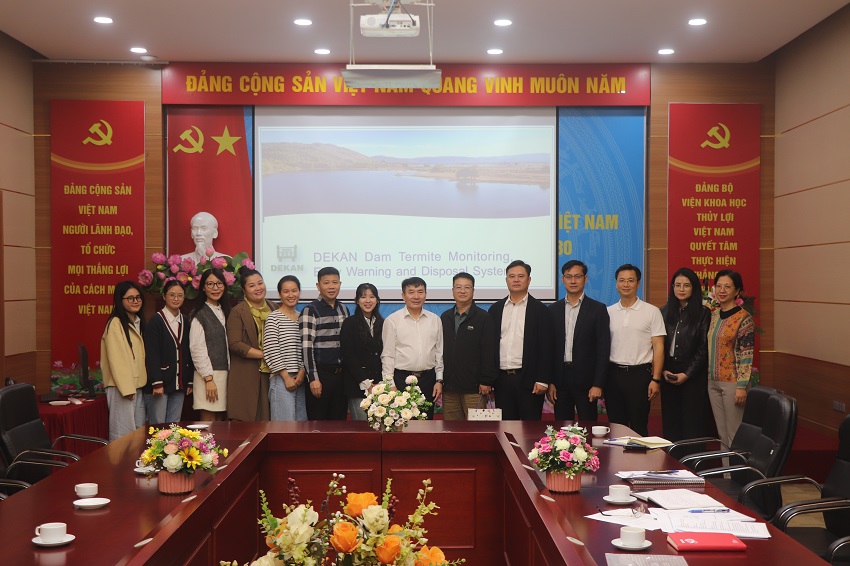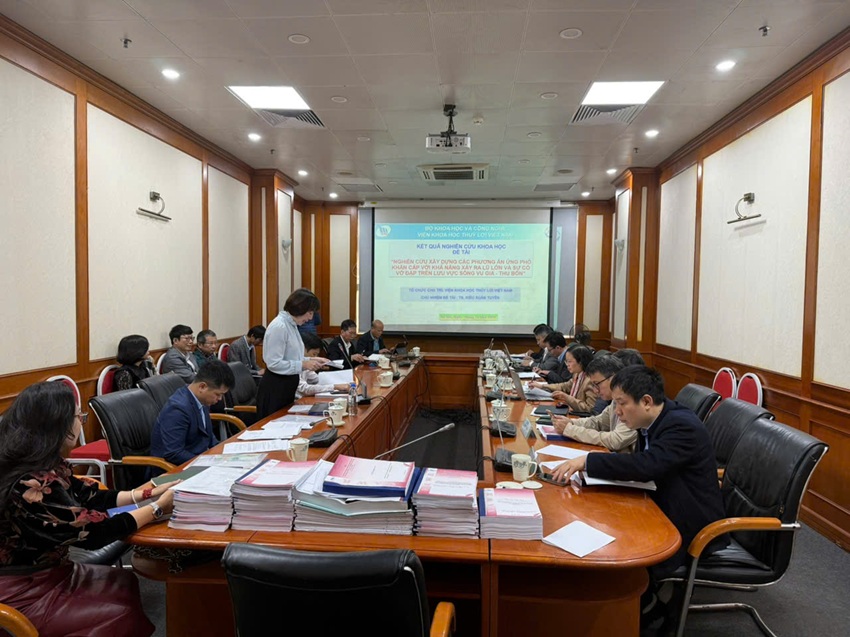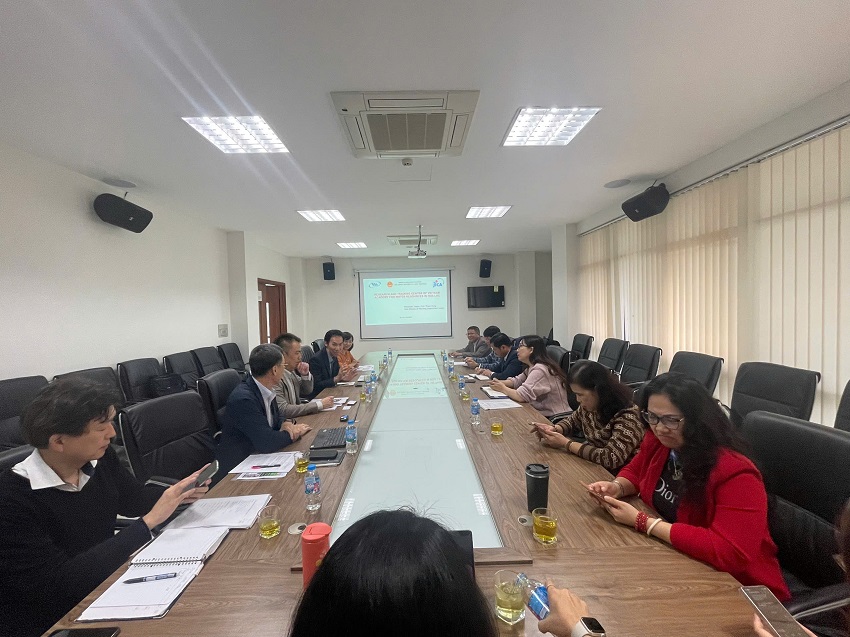Evaluation of gsmap and gauge rainfall serging chnioues for stream flow modelling using swat model over the Lam river basin
03/11/2021The research combined satellite-based rainfall data with observed rain gauge data using bias-correction method to adjust satellite data coefficients, this approach takes advantage of spatial distribution of the satellite rainfall and the accuracy of the rain gauge observation. These rainfall products were employed as input in SWAT model and the simulated discharges were validated with the measured discharge at 3 gauges within the Lam River Basin. The results indicated that the combined products provide the better simulation comparing with using single product, ground or satellite observation, based on the different efficiency criteria which commonly used in hydrology. This research is significantly important for water resources management on river basin, especially for the river basins where ground observations are limited or not available.
1. Introduction
2. Study sites and models
2.1. Study sites
2.2. Datasets
2.3. SWAT model
2.4. Statistic evaluations
3. Results and discussion
4. Conclusion
REFERENCES
[1] G. Artan, H. Gadain, J. L. Smith, K. Asante, C. J. Bandaragoda, and J. P. Verdin, “Adequacy of satellite derived rainfall data for stream flow modeling,” Nat. Hazards, vol. 43, no. 2, pp. 167–185, 2007.
[2] M. M. Bitew and M. Gebremichael, “Assessment of satellite rainfall products for streamflow simulation in medium watersheds of the Ethiopian highlands,” Hydrol. Earth Syst. Sci., vol. 15, no. 4, pp. 1147–1155, 2011.
[3] S. I. Khan et al., “Satellite remote sensing and hydrologic modeling for flood inundation mapping in lake victoria basin: Implications for hydrologic prediction in ungauged basins,” IEEE Trans. Geosci. Remote Sens., vol. 49, no. 1 PART 1, pp. 85–95, 2011.
[4] Y. M. Chiang, K. L. Hsu, F. J. Chang, Y. Hong, and S. Sorooshian, “Merging multiple precipitation sources for flash flood forecasting,” J. Hydrol., vol. 340, no. 3–4, pp. 183–196, 2007.
[5] D. Nerini et al., “A comparative analysis of TRMM-rain gauge data merging techniques at the daily time scale for distributed rainfall-runoff modeling applications,” J. Hydrometeorol., vol. 16, no. 5, pp. 2153–2168, 2015.
[6] M. Tugrul Yilmaz, P. Houser, R. Shrestha, and V. G. Anantharaj, “Optimally merging precipitation to minimize land surface modeling errors,” J. Appl. Meteorol. Climatol., vol. 49, no. 3, pp. 415–423, 2010.
[7] A. Gebregiorgis and F. Hossain, “How much can a priori hydrologic model predictability help in optimal merging of satellite precipitation products?,” J. Hydrometeorol., vol. 12, no. 6, pp. 1287–1298, 2011.
[8] D. J. Seo, “Real-time estimation of rainfall fields using rain gage data under fractional coverage conditions,” J. Hydrol., vol. 208, no. 1-2 /2, pp. 25–36, 1998.
[9] S. Nie, Y. Luo, T. Wu, X. Shi, and Z. Wang, “Journal of geophysical research,” Nature, vol. 175, no. 4449, p. 238, 2015.
[10] [10]WMO, Guide to Hydrological Practices. Volume I: Hydrology–From Measurement to Hydrological Information, vol. I, no. 168. 2008.
[11] T. Ushio et al., “A kalman filter approach to the global satellite mapping of precipitation (GSMaP) from combined passive microwave and infrared radiometric data,” J. Meteorol. Soc. Japan, vol. 87 A, no. June 2008, pp. 137–151, 2009.
[12] T. H. Bui and H. Ishidaira, “Evaluation of Satellite-Gauge Merging Precipitation Methods for Rainfall Runoff Simulations,” J. Japan Soc. Civ. Eng. Ser. B1 (Hydraulic Eng., vol. 71, no. 4, p. I_79-I_84, 2015.
[13] Arnold. J. G et al., “SWAT: Model Use, Calibration, and Validation,” Trans. ASABE, vol. 55, no. 4, pp. 1317–1335, 2012.
[14] K. C. Abbaspour, “SWAT-CUP: SWAT Calibration and Uncertainty Programs- A User Manual,Department of Systems Analysis,Intergrated Assessment and Modelling (SIAM),EAWAG. Swiss Federal Institute of Aqualtic Science and Technology,Duebendorf,Switzerland.,” User Man., p. 100p, 2015.
[15] H. Ruan et al., “Runoff simulation by SWAT model using high-resolution gridded precipitation in the upper Heihe River Basin, Northeastern Tibetan Plateau,” Water (Switzerland), vol. 9, no. 11, 2017.
[16] Y. Tuo, Z. Duan, M. Disse, and G. Chiogna, “Evaluation of precipitation input for SWAT modeling in Alpine catchment: A case study in the Adige river basin (Italy),” Sci. Total Environ., vol. 573, pp. 66–82, 2016.
[17] P. Ren, J. Li, P. Feng, Y. Guo, and Q. Ma, “Evaluation of multiple satellite precipitation products and their use in hydrological modelling over the Luanhe River Basin, China,” Water (Switzerland), vol. 10, no. 6, 2018.
[18] D. Li, G. Christakos, X. Ding, and J. Wu, “Adequacy of TRMM satellite rainfall data in driving the SWAT modeling of Tiaoxi catchment (Taihu lake basin, China),” J. Hydrol., vol. 556, pp. 1139–1152, 2018.
[19] H. Yuemei, Z. Xiaoqin, S. Jianguo, and N. Jina, “Model Evaluation Guidelines for Systematic Quantification of Accuracy in Watershed Simulations,” Am. Soc. Agric. Biol. Eng., vol. 50, no. 3, pp. 885–900, 2007.
——————————————————————————————————————
► See detail: Evaluation of gsmap and gauge rainfall serging chnioues for stream flow modelling using swat model over the Lam river basin
Dang Dinh Kha
Faculty of Hydrology, Meteorology and Oceanography, VNU University of Science,
Email: dangdinhkha@hus.edu.vn
Nguyen Y Nhu
Faculty of Hydrology, Meteorology and Oceanography, VNU University of Science,
Email: nguyenynhu@hus.edu.vn
Vu Viet Long
Power Engineering Consulting Joint Stock Company 1,
Email: vulong933@gmail.com
International conference water resources research on water resources security,
disaster prevention and climate change adaptation
Ý kiến góp ý:









